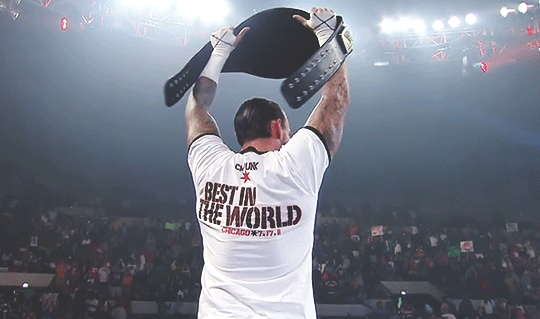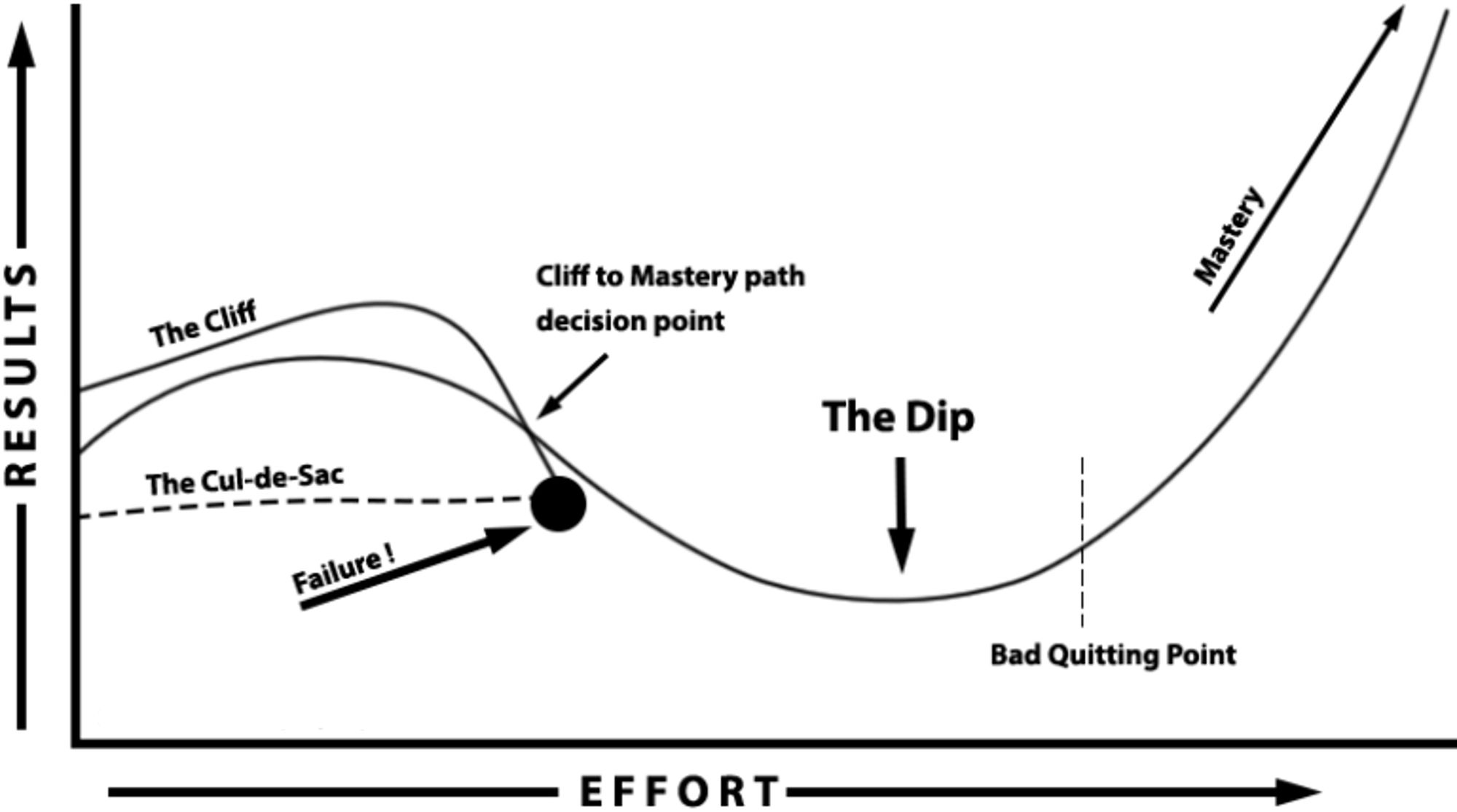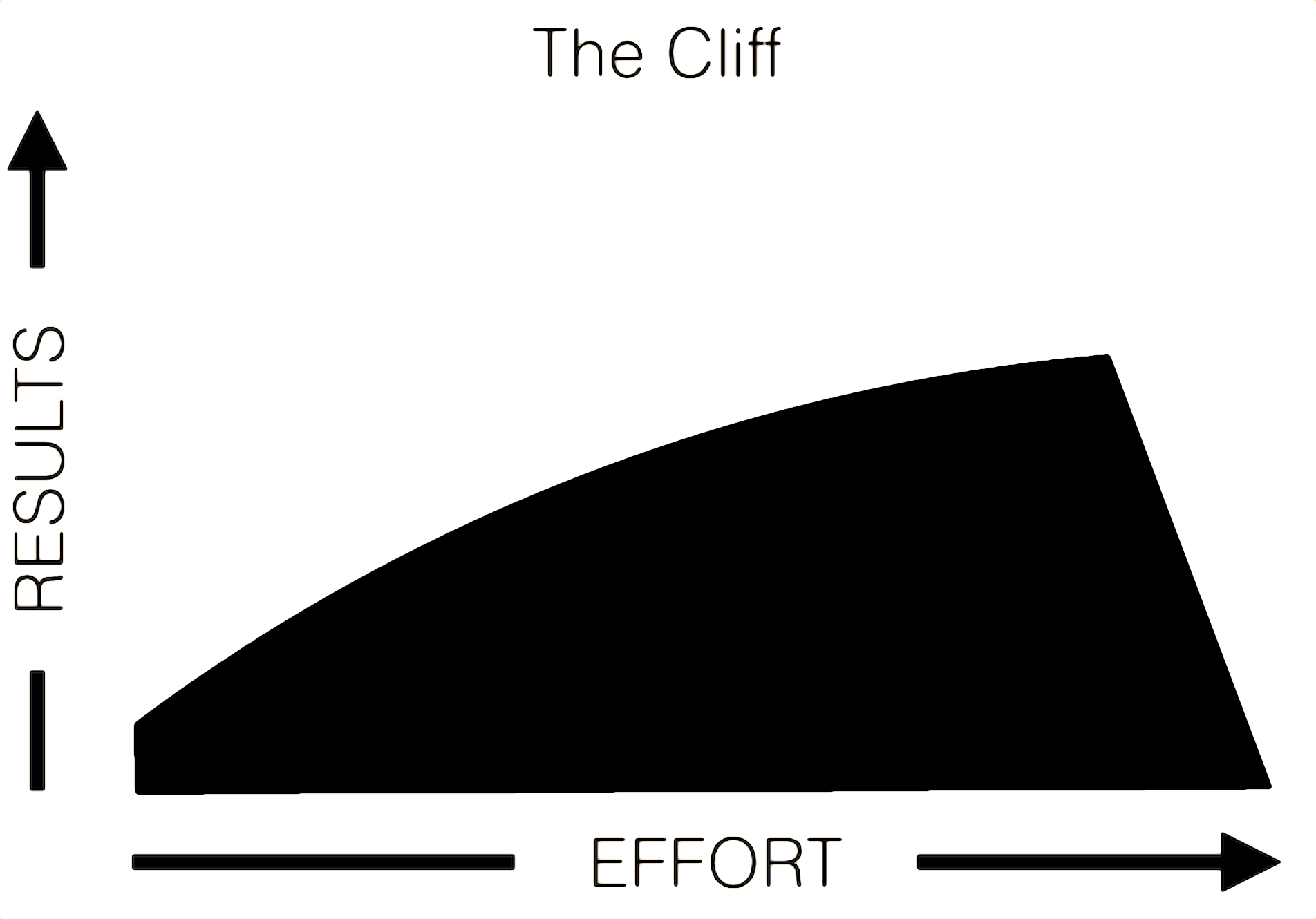This Book Changed How I Think About Quitting
If you want to be successful at anything you need to know when to push through the difficult times and when to quit things that just aren't working. That's the core message of Seth Godin's book The Dip which teaches you when to give up on an idea and when to persevere with it.
The Dip is a short, simple read and when I read it it completely changed my outlook on what it means to work hard and how to know when to quit. A dip will always exist in anything worthwhile, and if you want to succeed, you must learn how to properly cross it and that's what I'm going to be talking about in today's book club series video where I breakdown and share the key points from some of my favourite books.
That small percentage of people who have the ability to push just a little bit longer than most people will get extraordinary results. Similarly the small majority with the guts to quit early and redirect their concentration onto something new will get huge benefits. In both situations, overcoming difficult circumstances and emerging victorious to become the best in the world matters.
Being the Best in the World Is Seriously Underrated

Believe it or not, quitting is often a great strategy, a smart way to manage your life and your career. Sometimes, though, quitting is exactly the wrong thing to do. It turns out that there’s a pretty simple way to tell the difference.
The Surprising Value of Being the Best in the World
Our culture celebrates those we perceive to be the best at what they do. We provide recognition to the product, the song, the business, or the employee who achieved that number one spot. The rewards are heavily skewed too, so much so that it’s typical for #1 to get ten times the benefit of #10, and a hundred times the benefit of #100.
Are You The Best in the World?
Anyone who is considering hiring you, buying from you, voting for you or following your instructions will want to know how good you are and preferably whether you're the best. Best in the sense of what is best for them right now, given their beliefs and knowledge. And in the sense of their world—their accessible universe.
The Magic of Thinking Quit
Most people would advise you to persevere—to work hard, try harder, put in more hours, and train even more. If it's a sport or long distance race where you goal is simply to finish not quitting is great advice
But if all you need to do to succeed is to keep going and not give up, then why do people less motivated or talented than you win?
Well it involves understanding the nuanced difference between quitting something and giving up on something. Strategic quitting is the secret of many successful people and companies. Strategic quitting is an active process where no emotion is involved and the decision is an educated one based on data and factual information. Reactive quitting or just giving up on the other hand is at the heart of why many people or businesses never get to the level they want. Reactive quitting is emotional, it's giving up because you're fed up and this is what most people do. They quit when it’s too hard and they stick with things against their own happiness when they don't have the energy or will to quit.
In his book Seth Godin uses graphs to visually represent the relationship between effort put into something and the visible results. There are really three potential situations that can be shown in graph form they are the dip, the cul-de-sac and the cliff.

Curve 1: The Dip

Almost everything in life worth doing is controlled by the Dip. At the beginning, when you first start something, it’s fun and new. You could be learning guitar or building a startup or posting content online or studying for biology exams it doesn’t really matter; it’s initially interesting, and you get plenty of good feedback from the people around you. So for example when I started this YouTube channel it was really fun seeing the videos go up online, seeing people engage with them and learning everything from editing to thumbnails and titles. Over the next few days and weeks, the rapid learning you experience keeps you going and anything new is inherently fun and exciting. Whatever your new thing is, it’s easy to stay engaged with it.
And then the Dip happens. The Dip is the long slog between starting something and actually mastering it or seeing exponential results. The dip is a long slog that’s actually a shortcut, because it gets you where you want to go faster than any other method for example if you give up, procrastinate or don't put in the effort during a dip you won't see the benefits as quickly.
The Dip is the difference between the easy “beginner” technique and the more useful “expert” approach where people embrace the challenge and power through.
Curve 2: The Cul-De-Sac

The second graph that might represent your current situation is called the Cul-de-Sac (French for “dead end”) and compared to the Dip it is so simple it doesn’t even need a chart. It’s a situation where you work and you work and you work and nothing much changes and you get nowhere. It doesn’t get a lot better, it doesn’t get a lot worse. It just stays the same. For example if you're stuck in the same job doing the same thing without any promotion on the horizon you can work as hard as you like but you aren't guaranteed to get any results from your effort and even if you do those results might be negligible rather than exponential.
That’s why they're called jobs dead-end jobs. There’s not a lot to say about the Cul-de-Sac except to realize that it exists and to embrace the fact that if you find yourself in one, you need to get out of it, fast. That’s because a dead-end is keeping you from doing something else. It's not just that you aren't progressing it's that you are actually losing time where you could be focusing your hard work on something that is going to get you the results you want.
The opportunity cost of investing your life in something that’s not going to get better is just too high.
Curve 3: The cliff (rare but scary)

The final situation also doesn't need a graph as it's quite literally a cliff. Smoking is designed to be almost impossible to quit, the longer you do it, the better it feels to continue smoking. The pain of quitting just gets more and more over time. Seth Godin calls this situation a Cliff. It's a situation where you can’t quit until you fall off, and the whole thing falls apart. This is very painful and traumatic and you want to try and avoid this at all costs.
If It Is Worth Doing, There’s Probably a Dip
Now people often get confused about when to push through something and when you need to quit it and really it's all about the end result and your willingness to push through the dip.
For example any sport has a Dip. The difference between a mediocre club player and a world-class player isn’t inborn talent—it’s the ability to push through the moments where it’s just easier to quit. A couple of my friends were training to be Tennis Pros. They were really good and won all of their national competitions at doubles and singles competition as teenagers. At this stage they practised regularly and saw the results which kept them excited. When they moved up onto international competitions, one morning they got out onto one of the practice courts early at around 7am. To their surprise they saw Rafa Nadal practicing his serve. He was smashing the ball into the same spot over and over again without anyone returning. When they got a bit closer they saw his coaching team and asked them how long he'd been out therefore. One of the coaches laughed and told them that he goes out at 5:30am everyday to practise his serve for 3 hours before breakfast and he'd been doing that for the last 10 years. My friends took a look back at the power of his serve and it's accuracy and in that moment they collectively decided that that level of dedication and sacrifice wasn't for them and that if they were to come up against Rafa Nadal he was so good that even if they were to push through their Dip there was no guarantees of being the best or of getting the results they were after. The Dip creates scarcity and scarcity creates value.
The Dip Is Where Success Happens
Now if you haven’t already realized it, the Dip is the secret to your success, it's where success happens. The people who set out to make it through the Dip—the people who invest the time and the energy and “the effort to power through the Dip—those are the ones who become the best in the world, just like Rafa Nadal in tennis.
Most People Are Afraid to Quit
Equally most people are afraid to quit as it’s easier to be mediocre than it is to confront reality and quit. Quitting is difficult. Quitting requires you to acknowledge that you’re never going to be #1 in the world. So it’s easier just to put it off, not admit it, settle for mediocre and continue. My friends could have stuck with playing tennis, practiced intermittently and either been stuck at a low level of the game where they wouldn't achieve the financial or sporting rewards they wanted or worse they could have reached a cliff where they were much older and realised that their dream was over. So in this instance my friends made a decision based on an analysis of their own desires, they didn't want to get up at 5:30 everyday and sacrifice everything to be Rafa Nadal and an analysis of their own ability, they realised that even if they did they wouldn't be able to beat him. But what about if you do want to push through the dip? For example you know that things are tough right now for your startup but if you push through you know you can scale up the revenue and IPO or sell it to massively impact your wealth. Well to understand this let's look at seven reasons why you might give up during the dip and fail to become the best in the world at what you do.
Seven Reasons You Might Fail to Become the Best in the World
- You run out of time (and quit).
- You run out of money (and quit).
- You get scared (and quit).
- You’re not serious about it (and quit).
- You lose interest or enthusiasm or settle for being mediocre (and quit).
- You focus on the short term instead of the long (and quit when the short term gets too hard).
- You pick the wrong thing at which to be the best in the world (because you don’t have the talent).
The Big Opportunity
If you can get through the Dip, if you can keep going when the system is expecting you to stop, you will achieve extraordinary results. People who make it through the Dip are in short supply, so they generate more value. When you’re the best in the world, you share the benefits (the income, the attention, the privileges, the respect) with just a handful of people or organizations or brands.
If You’re Not Going to Get to #1, You Might as Well Quit Now
Now our society teaches us that quitting things is bad. And generally this is true especially if you're in the Dip and need to power through but it’s also okay to quit, sometimes. In fact, it’s okay to quit often. You should quit if you’re in a cul-de-sac, you should definitely quit if you’re facing a Cliff and you should quit if the project you’re working on has a Dip that isn’t worth the reward at the end. Quitting the things that don’t go anywhere early is essential if you want to focus your time on the ones that will give you the results. This is best illustrated with marketing. If you are running ads or a particular marketing strategy to get your business noticed you'll want to regularly check your marketing spend and the revenue the ad or strategy is generating. In marketing this is called ROAS or return on ad spend. If you put in £10 to a paid instagram ad and get £100 back that's an ROAS of 10 and an indicator that ad and strategy is working. On the other hand if literally no-one is clicking on your ad or buying your product and you're spending thousands of pounds it's time to quit that ad and switch it off. Now most marketing teams will run lots of ads and experiment with similar ads changing the messaging, image or even the colour of the buy now button. These are all experiments and it's expected that some will work and some won't. The overall strategy of running ads isn't being given up on we're just ditching the tactics that aren't working right now.
Strategic quitting is a conscious decision you make based on the choices and the data that are available to you. If you realize you’re at a dead end compared with what you could be investing your time or money in, quitting is not only a reasonable choice, it’s a smart one. Failing, on the other hand, means that your dream is over. Failing happens when you give up, when there are no other options, or when you quit so often that you’ve used up all your time and resources.
Even worse than failing is coping. Coping is what people do when they try to muddle through. They cope with a bad job or a difficult task. The problem with coping is that it never leads to exceptional performance. All coping does is waste your time and misdirect your energy. If the best you can do is cope, you’re better off quitting. Quitting is better than coping because quitting frees you up to excel at something else.
Rather than following the advice "never give up" a better piece of advice is “Never give up on something with great long-term potential just because you can’t deal with the stress of the moment.” If quitting is going to be a strategic decision that enables you to make smart choices for your life and your career, then you should outline your quitting strategy before the discomfort sets in. This is what I did when I chose to quit my job as a surgeon. I loved being a doctor but the opportunity cost of not going full time working on a tech business was too great and I made a decision that I'd rather quit my job and take a risk where I'd learn more and challenge myself than I would if I stayed on the medical career ladder.
What To Do If You're Thinking About Quitting
Now at this point you're probably thinking about your own circumstances and thinking should I quit or should I power through the dip to get to the rewards at the end. Well luckily Seth Godin finishes his book The Dip by suggesting you ask yourself three questions if you're considering quitting.
FAQs about Quitting
AM I PANICKING?
Quitting is not the same as panicking. Panic is never premeditated. Panic attacks us, it grabs us, it is in the moment. Quitting when you’re panicked is dangerous and expensive. The best quitters, as we’ve seen, are the ones who decide in advance when they’re going to quit. You can always quit later—so wait until you’re done panicking to decide.
WHO AM I TRYING TO INFLUENCE?
Are you trying to succeed in a market? Get a job? Train a muscle? If you’re trying to influence just one person, persistence has its limits. If you’re trying to influence a market, though, the rules are different. Sure, some of the people in a market have considered you (and even rejected you). But most of the people in the market have never even heard of you. The market doesn’t have just one mind. Different people in the market are seeking different things.
WHAT SORT OF MEASURABLE PROGRESS AM I MAKING?
If you’re trying to succeed in a job or a relationship or at a task, you’re either moving forward, falling behind, or standing still. There are only three choices. To succeed, to get to that light at the end of the tunnel, you’ve got to make some sort of forward progress, no matter how small.

